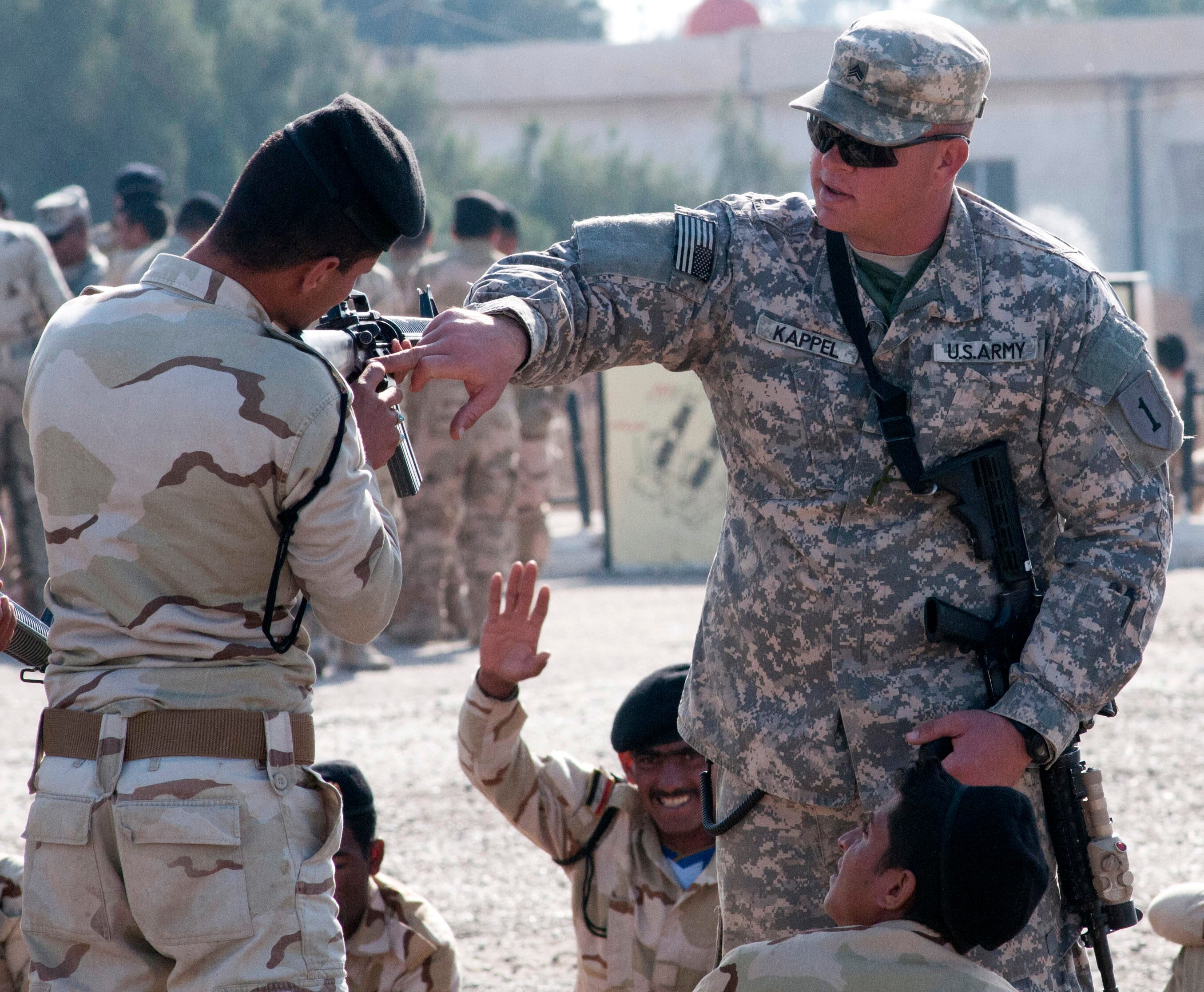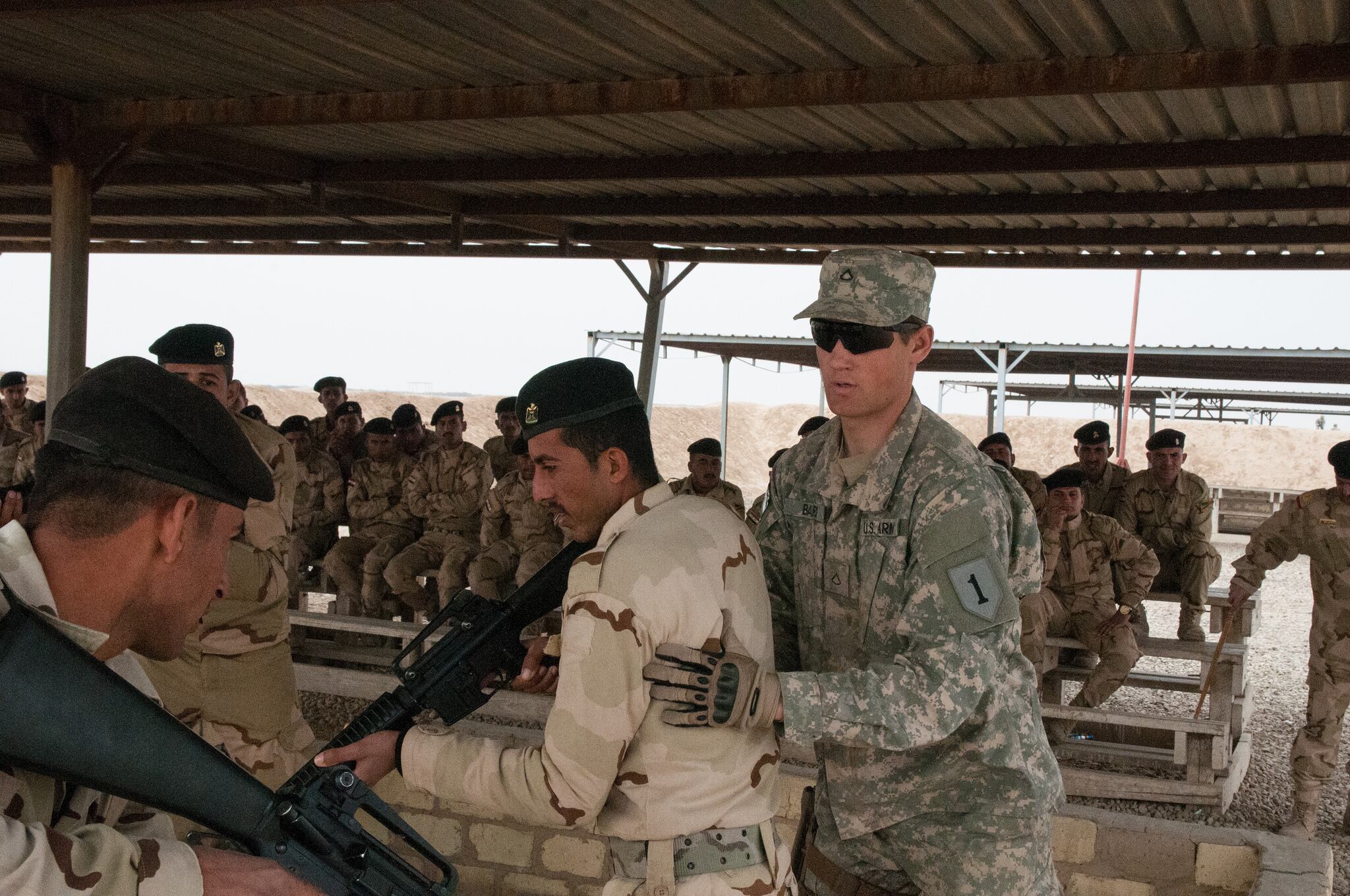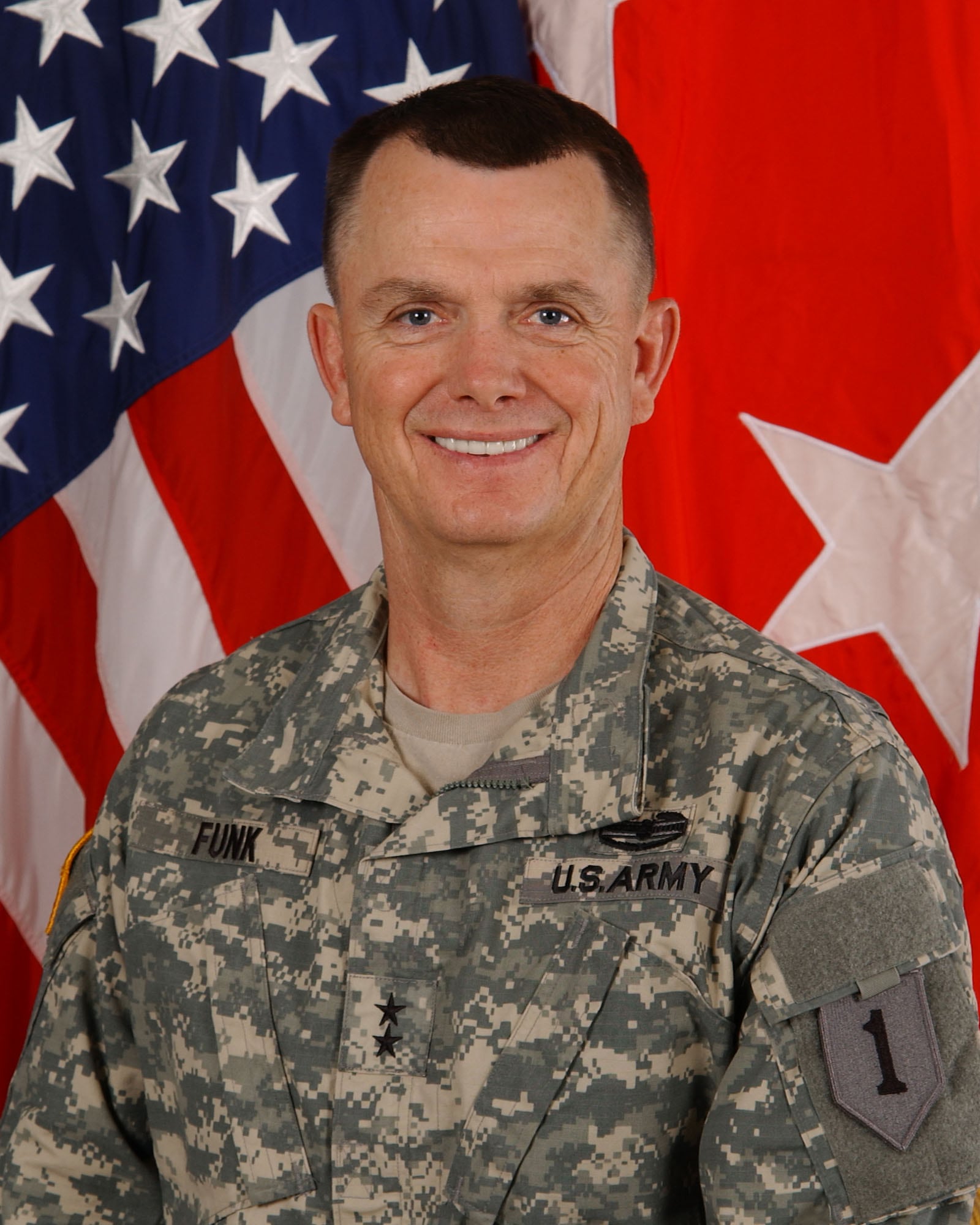U.S. and coalition forces have trained two brigades' worth of Iraqi troops, with three more underway, a top U.S. general in country told Army Times.
"We're making progress at all the Building Partner Capacity sites," said Maj. Gen. Paul Funk, commander of Coalition Joint Forces Land Component Command-Iraq and the 1st Infantry Division. "We're training over 4,000 Iraqis. We've finished two brigades. We're now on our way to training three more. They're in various stages of readiness right now."
Building Partner Capacity sites are part of the White House's overall strategy in Iraq. The goal of these sites is to train Iraqi and Peshmerga Kurdish troops preparing to enter the fight against the Islamic State group. The mission is taking place in tandem with the advise-and-assist mission, where U.S. and coalition troops are working with Iraqi and Kurish troops currently in the fight.
There are five BPC sites: al-Asad, Erbil, Baghdad, Taji and Besmayah.
When Iraqi and Peshmerga Kurdish troops arrive at the sites, they undergo a six-week program of instruction and a three-week rehearsal exercise, Funk said.
"We're going to keep training the Iraqi army as long as they keep showing up," he said.

Sgt. David Koppel explains a feature of the M16 rifle to a trainee from the 9th Iraqi Army Division on Jan. 3 at Camp Taji, Iraq.
Photo Credit: Staff Sgt. Daniel Stoutamire/Army
The initial goal, however, is to train 10,000 troops, Funk said.
"Ten thousand is our initial tranche into what we like to say are the counter-attack brigades," he said.
These troops are devoted to training and will deploy later to reinforce the soldiers on the battlefield, Funk said, "which is an advantage over our enemies."
Challenges still remain. This includes getting equipment to the Iraqi troops in a timely fashion, he said.
"I think we've got the personal equipment piece cracked, finally," he said. "Now it's all the ancillary equipment. For example EOD equipment, breaching equipment like dozers and bucket loaders. It's getting it all here and getting them organized and then getting them trained on it. It's not easy."
The Iraqi and Pehmerga Kurdish troops in training are "enthusiastic," Funk said.
"They're starting to understand how we do training," he said. "The battalion commanders are walking the lanes, senior leaders are involved in the training. They're starting to catch on rapidly."
Funk recounted a recent trip where he and his command sergeant major visited a training session.

Soldiers in Iraq are training more than 4,000 Iraqis to fight the Islamic State group.
Photo Credit: Master Sgt. Mike Lavigne/Army
"We were laying in the dirt, walking with the jundis," he said, referring to the Iraqi soldiers. "They love their country, and they sure are working hard."
When he spoke with Army Times March 30, Funk also provided an update on a number of topics. Here's what he had to say. Interview highlights, edited for clarity and space:
Q. Could you give us an update on the advise-and-assist mission?
A. Everywhere there's a U.S. advise-and-assist, we're making progress.
We've made great progress in the al-Asad area, where we've got an advise-and-assist and a Building Partner Capacity team. We've got great advise-and-assist in Karma. Everything in Erbil is advise-and-assist. That entire operation has been world-class, from the [special operations] guys to the coalition.
Q. How are you measuring success or progress?
A. We're measuring it usually through operations, through terrain taken back, efficiency in their operations. For example, Karma, we took it back. The whole Tigris canal back to the north side of Fallujah, they've taken back in the last two weeks. They're into Tikrit now. They're in the city, so they're going to take all that back.
We've got an area southeast of Kirkuk that they took back, about 40 square kilometers.
They're making substantial progress.
Q. How do you respond to critics who say this is taking too long?

Maj. Gen. Paul Funk
Photo Credit: Army
A. Fighting in cities is difficult. Fighting house to house and clearing block to block is difficult, dangerous work.
Q. How would you describe the enemy's current state?
A. The enemy is on its heels. They're in a defensive position. We're attacking them across the country.
Everywhere Daesh thought they were safe, the Iraqi army's starting to push them out of there.
That doesn't mean the fighting is easy. Fighting house to house isn't easy, but they're up to the challenge. It's going to take a while. As I see it, as we grow capacity, as they get more effective, we get to go more quickly.
Right now it's a slow and steady push across the country.
Q. Do you have what you need for the mission?
A. Right now, we do. If the mission changes, we may need to ask for different types of specialties or capabilities. They may want more medical training or logistical training. What we try to do is tailor it for that. Right now we're primarily training them to fight.
Q. What are the Iraqis asking for?
A. Everything you can think of, they're looking for, from sniper training and individual marksmanship all the way up to how to employ their tanks. You name it, they're asking for it. The Iraqis are eating the training up. They're excited about us being here to train. They're gaining capacity, they're getting better every day.
Q. How many U.S. troops are now in Iraq?
A. There are a little under 3,000 U.S. troops in Iraq now. The majority of those are soldiers.
Q. What's next?
A. We're building up to Mosul through training and building capacity. And we're always building up for the defeat of Daesh in Iraq. That's a constant, never-ending quest we're going to pursue.
Michelle Tan is the editor of Army Times and Air Force Times. She has covered the military for Military Times since 2005, and has embedded with U.S. troops in Iraq, Afghanistan, Kuwait, Haiti, Gabon and the Horn of Africa.





